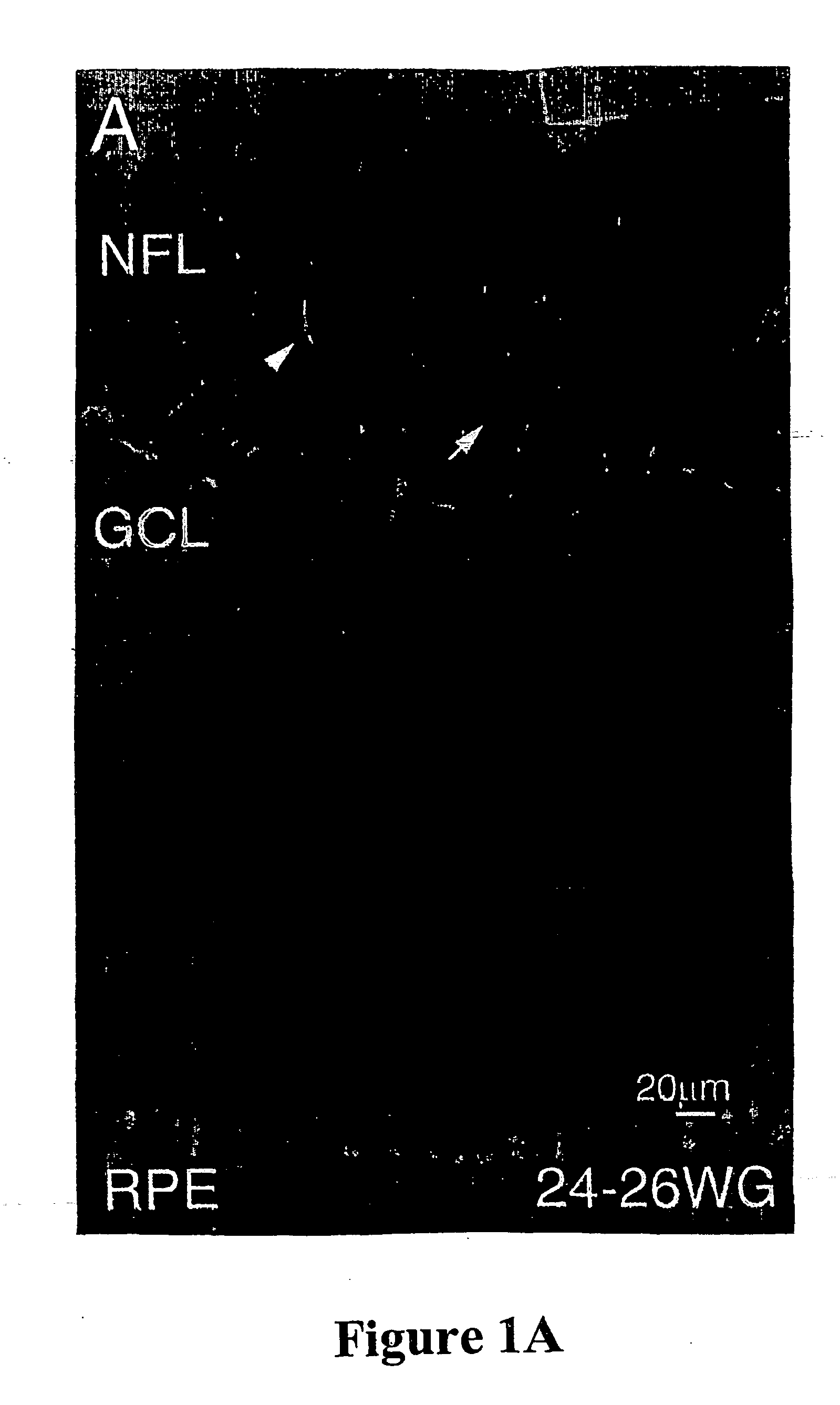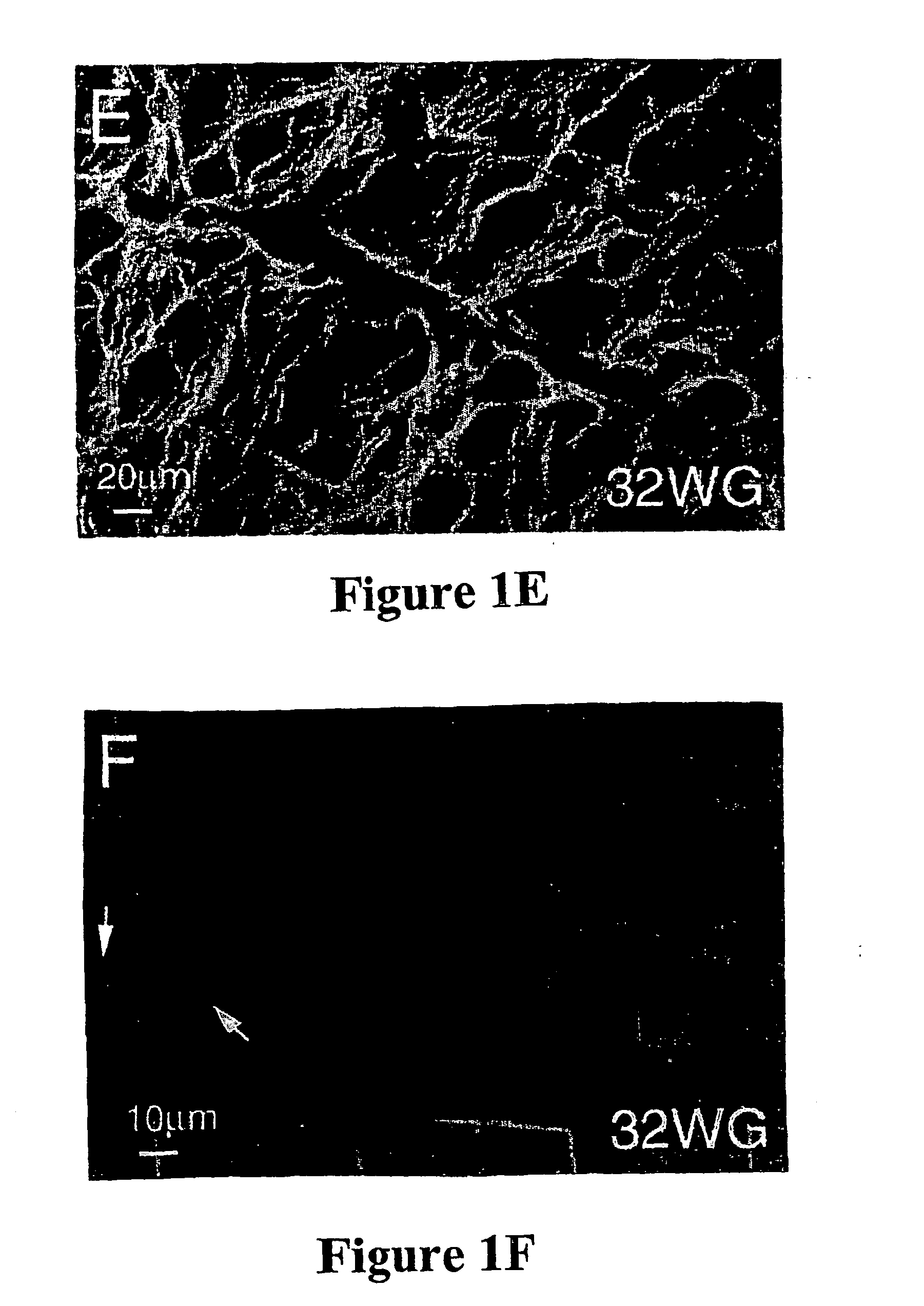Purification of lineage-specific cells and uses therefor
- Summary
- Abstract
- Description
- Claims
- Application Information
AI Technical Summary
Benefits of technology
Problems solved by technology
Method used
Image
Examples
example 1
Collection, Age Determination and Preparation of Human CNS Tissue
[0098] Human fetal eyes, ranging in age from 8 to 32 weeks gestation were used in accordance with the guidelines set forth in the Declaration of Helsinki. Fetuses older than 20 weeks gestation had died of natural causes after premature or difficult deliveries. Younger fetuses were obtained after water bag- or prostaglandin-induced abortions, which are permitted up to 20 weeks gestation. Embryonic or fetal brain tissue also provided a useful source of cells. The age of each fetus was determined from charts of crown-rump length and crown-heel length (Potter, E. L. and Graig, J. M., Pathology of the Fetus and the Infant, pp. 29-37, Yearbook Medical Publishers, Chicago, 1975). Three adult human retinas were obtained from an eye bank and originated from individuals aged 69, 69, and 79 years; the latter individual had a history of lung carcinoma whereas the other two had no significant medical history.
[0099] For preparatio...
example 2
Pax2-GFAP, Pax2-vimentin, Pax2-CD34, and CD34-GFAP Double-Label Immunohistochemistry
[0103] Retinal whole-mount preparations were incubated for 2 to 3 days at 4° C. with a mixture of anti-Pax2 and either mouse anti-GFAP, anti-vimentin, or anti-CD34. They were then washed three times with PBS containing 0.1% v / v Triton X-100, incubated for 4 h with a mixture of Cy3-conjugated goat antibodies to rabbit IgG (1:200 dilution) (Jackson ImmunoResearch) and fluorescein isothiocyanate (FITC)-conjugated sheep antibodies to mouse Ig (1:50 dilution) (Amersham), and washed three times with PBS containing 0.1% v / v Triton X-100. For confocal microscopic analysis of double labeling with anti-CD34 and rabbit anti-GFAP, retinas were incubated overnight at 4° C. with the primary antibodies, washed and then incubated with appropriate secondary antibodies as described above. For light microscopy, retinas were labeled with polyclonal anti-GFAP as described previously (Hughes et al., 2000, supra) and then...
example 3
Triple-Label Immunohistochemistry for Pax2, Vimentin and GFAP
[0105] For triple labeling, retinal whole-mounts and sections were incubated overnight at 4° C. in a humidified atmosphere with a mixture of anti-Pax2 and anti-vimentin. After washing three times with PBS, they were incubated for 2 h with Cy3-conjugated anti-rabbit IgG and either FITC-conjugated goat anti-mouse IgG2a (1:50 dilution) (Southern Biotechnology Associates) or Texas red-conjugated goat anti-mouse IgM (1:50 dilution) (Vector). The tissue was washed three times with PBS, incubated overnight at 4° C. with mouse anti-GFAP, washed three times with PBS, and incubated for 4 h with biotinylated goat anti-mouse IgG1 (1:50 dilution) (Southern Biotechnology Associates). After washing three times with PBS, the tissue was incubated overnight at 4° C. with AMCA-conjugated streptavidin (1:100 dilution) (MDA Pharma) or Cy5-conjugated streptavidin (1:100 dilution) (Jackson ImmunoResearch), washed with PBS, and mounted in glycer...
PUM
 Login to View More
Login to View More Abstract
Description
Claims
Application Information
 Login to View More
Login to View More - R&D
- Intellectual Property
- Life Sciences
- Materials
- Tech Scout
- Unparalleled Data Quality
- Higher Quality Content
- 60% Fewer Hallucinations
Browse by: Latest US Patents, China's latest patents, Technical Efficacy Thesaurus, Application Domain, Technology Topic, Popular Technical Reports.
© 2025 PatSnap. All rights reserved.Legal|Privacy policy|Modern Slavery Act Transparency Statement|Sitemap|About US| Contact US: help@patsnap.com



